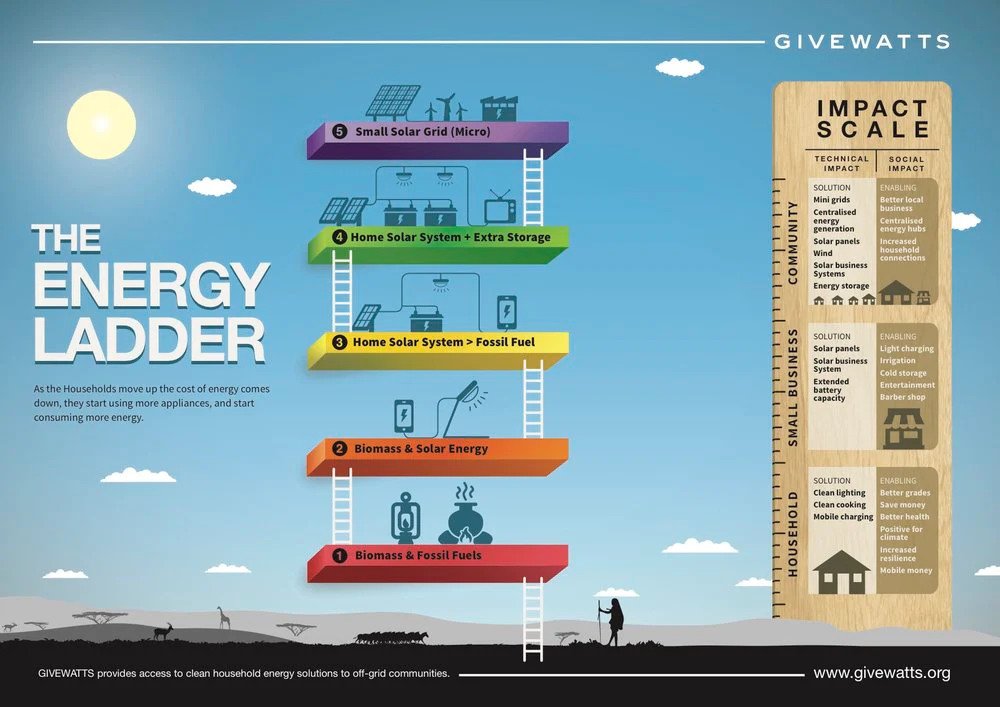The GIVEWATTS Energy Ladder
is a representation of the journey an unconnected individual, family or community makes in their path to electrification. It is not a stand-alone ladder, but an integral part of a holistic view of development, market growth, and breaking the structures that maintain the poverty cycle.

On a household level the energy ladder starts with the use of traditional energy sources such as biomass and fossil fuels for cooking and light. These families are low income, meaning that they earn between $0 and $2 per day. In most African countries this makes up between 30%-50% of the population. In Kenya the World Bank puts the number at 50%. These families send their kids to bed hungry several nights a week. The children struggle to do their homework. The family might have a mobile phone, but it is more often than not out of battery. Cooking is done over three rocks and an open fire.
The first step up the energy ladder introduces solar power in small modules, such as a single solar lamp or an energy efficient stove. This has a big impact on the household as it saves money on kerosene, allows the family to charge their mobile phone and get better access to mobile money services, and releases a lot of time for the children and women in the household to find paid work, not go and collect fossil fuel (on average 4h per day per woman in Kenya), and frees up time to study and doing household chores after dark. There are also health benefits by avoiding toxic smoke from kerosene lamps or the open fire.
The step above that is a larger solar system with multiple light points and more functionality, such as a radio, a small TV, or some small piece of equipment that improves productivity. Examples of this include egg incubators, small power tools or simply light to keep the vegetable stand open for longer at the market. At this step the family benefits from more light, they can follow news and stay better informed about local and national issues, they increase their productivity, and can make more money.
As the households climb the energy ladder they also climb other development ladders. These range from the financial inclusion ladder with more access to money services, the health ladder with fewer cases of respiratory issues, and more access to basic nutrition, and the education ladder with more children reaching higher education and professional work. The long term impact of just a few steps up some of these ladders mean that households loosen the grip of poverty, and can start planning for more long term investments in their children and their productive land.
As the household climbs the energy ladder they consume energy in new ways, gradually improving their standard of living, with a whole new menu of choices opening up. Further up the energy ladder grid equivalent electrification occurs and usage is similar to that in developed countries. It is worth noting the correlation between the introduction of washing machines and vacuum cleaners in Europe and the US on the one hand and the development in gender equality and economic growth per capita on the other.
Movement up this energy ladder is usually determined by income levels; the poorest and most rural communities consume the lowest, dirtiest, most hazardous, and most inefficient energy sources. As they experience increases in income and/or savings from using cleaner energy products, they can move up the ladder and purchase products at the next level. Customers at the lowest tier of the energy ladder do not have any clean energy products and often take the first step when they purchase the most basic solar lamp or energy efficient stove. GIVEWATTS begins operating at the bottom of the energy ladder.